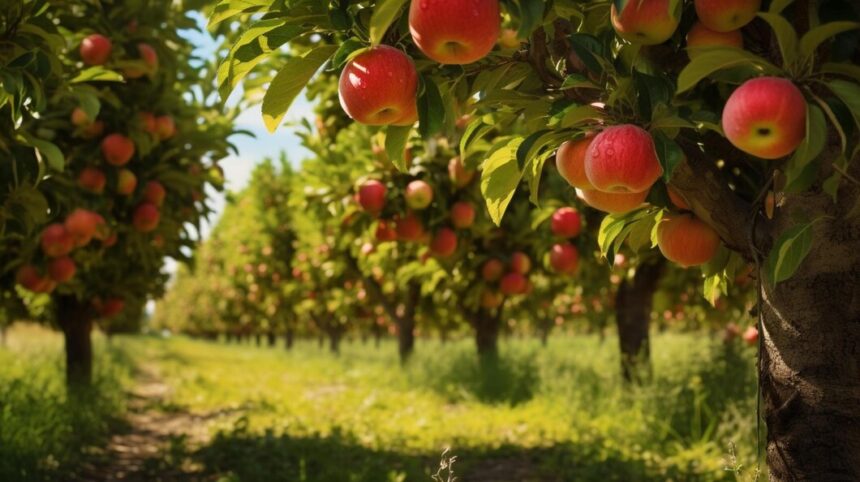Grafting is a horticultural technique that involves joining two plants together so they grow as one. This method is particularly beneficial for fruit tree cultivation, allowing farmers to propagate desirable varieties, improve disease resistance, and enhance fruit quality. For South African farmers looking to boost their fruit production, understanding the basics of grafting is essential. Here’s a guide to help you get started.
1. Understanding Grafting
Grafting involves taking a scion (a young shoot or twig from a desired fruit variety) and joining it with a rootstock (the root system of another plant). The success of grafting relies on the compatibility of the two plants, which should belong to the same species or closely related species.
2. Selecting the Right Varieties
Choose rootstocks that are well-suited to your soil type and climate. Common fruit tree rootstocks in South Africa include:
- Apple: M9, M26, and MM106
- Pear: Quince A and BA29
- Plum: St. Julien A and Myrobalan
- Peach: Guardian and Nemaguard
Select scions from healthy, high-yielding fruit trees known for their quality fruit and disease resistance.
3. Timing the Grafting Process
The best time to graft fruit trees in South Africa is during the late winter or early spring when the sap begins to flow, typically between August and September. This period encourages successful healing and growth as the trees come out of dormancy.
4. Preparing the Scion and Rootstock
- Scion Preparation: Cut the scion from the desired tree using sharp, clean pruning shears. Choose a healthy shoot that is about 15-30 cm long and has several buds. Make a clean cut to avoid damaging the plant tissue.
- Rootstock Preparation: Select a healthy rootstock and make a clean cut at a height suitable for your grafting method. This cut should be done just above a node or bud to encourage growth.
5. Choosing a Grafting Method
Several grafting techniques can be used for fruit trees. The most common methods include:
- Cleft Grafting: Ideal for larger rootstocks, this method involves splitting the rootstock and inserting the scion into the cleft.
- Whip and Tongue Grafting: This method is suitable for scions and rootstocks of similar diameters. It involves making matching sloped cuts on both the scion and rootstock, allowing them to interlock.
- Budding: This technique involves inserting a single bud from the scion into the rootstock. It is commonly used for peaches and plums.
6. Grafting Process
- Make clean cuts on both the scion and rootstock as per the chosen method.
- Join the scion and rootstock together, ensuring the cambium layers (the green layer just under the bark) are aligned for successful union.
- Secure the graft using grafting tape or parafilm to hold the scion in place and protect it from drying out.
7. Aftercare and Maintenance
Once grafted, it is crucial to provide proper care to ensure the success of the graft:
- Watering: Keep the grafted area moist but not waterlogged. This helps the scion establish roots and reduces stress on the plants.
- Protection: Shield the grafted area from extreme temperatures and pests. Covering with a plastic bag can help maintain humidity during the initial healing phase.
- Monitoring: Check for signs of growth, such as budding, within a few weeks. If successful, remove any tape or wrapping to allow the graft to breathe.
8. Common Challenges
Grafting can sometimes be challenging. Common issues include:
- Incompatibility: Not all scion and rootstock combinations will be successful. Research compatible varieties before grafting.
- Disease: Ensure both the scion and rootstock are disease-free to prevent graft failure.
9. Experimenting and Learning
Grafting requires practice and experimentation. Don’t be discouraged by initial failures; instead, learn from them and refine your techniques. Join local agricultural groups or attend workshops to share knowledge and gain insights from experienced growers.
Grafting is a valuable skill for South African farmers aiming to enhance their fruit production. By understanding the basics of grafting, selecting the right varieties, and providing proper care, farmers can successfully propagate fruit trees that yield high-quality produce. With patience and practice, grafting can become a powerful tool in your agricultural toolkit, contributing to a more fruitful harvest.
Join 'Farmers Mag' WhatsApp Channel
Get the latest Farming news and tips delivered straight to your WhatsApp
CLICK HERE TO JOIN






